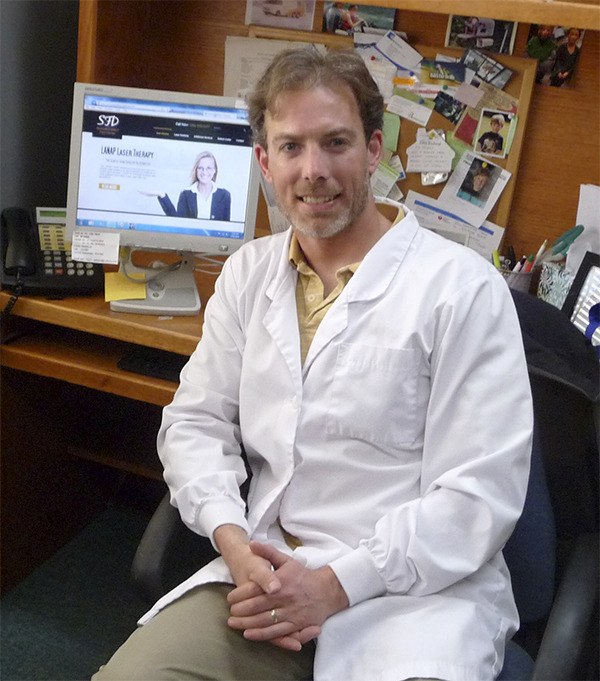If you’re like 50 percent of the population, you probably have some form of gum disease that in its moderate and severe forms can result in tooth and bone loss. Gum disease is caused by bacteria that form in pockets around teeth, causing dying tissue and inflammation.
The traditional method for curing gum disease was to cut out the unhealthy tissue with a scalpel but Dr. Nathan Gelder of Sequim Family Dentistry has been using a less invasive way of not only curing gum disease, but helping the body restore bone loss.
“I came across the laser assisted new reattachment procedure (LANAP) about four years ago and found it’s by far the best treatment for gum disease. I’ve treated about 200 people with really fantastic results,” Gelder said.
“What happens in gum disease is the gums ‘unzip’ or detach from the tooth so the person loses bone as well around the tooth. The laser removes the bacteria and unhealthy tissue and gets the gums to reattach. The healthy tissue makes a new seal and the body can regenerate some of the lost bone.”
Gelder said the traditional procedure of deep cleaning doesn’t reverse bone loss.
“Now we can turn things around — it’s really exciting.”
Going online
Recently, to promote patient education, Gelder launched a new website dedicated to explaining the ins and outs of LANAP — it’s at www.sequimlaserdentistry.com. The in depth site explains what the procedure is, the six steps of LANAP and what patients having it can expect afterward in terms of pain and recovery.
There’s also a list of frequently asked questions.
“It’s a relatively advanced procedure — we were the 10th office in the state to have the machine to do the procedure,” Gelder said. “We’re doing our best to get people to understand that chronic inflammation from gum disease contributes to other systemic diseases like heart disease, stroke and diabetes. By getting gum disease controlled you’ve reduced the inflammation and eliminated one of the risk factors.”
Gelder attended two weeklong in services learning about the laser and the procedure and followed up for advanced training.
“From what I knew before and what I’ve seen over the past four years, the LANAP provides the best and most consistent care for gum disease. The healing process is so much easier than traditional gum surgery with scalpels,” Gelder said.
“The next day there’s just mild soreness. With traditional surgery, there’s a lot of pain for one to two weeks. With LANAP it’s much easier to heal.”
On the website, it notes that the procedure can remove up to 90 percent of the inflammation on the first visit. It’s touted as a “no cut, no sew, no fear” procedure.
“I’ve been really happy to have it available and happy to be helping people be healthier,” Gelder said.



